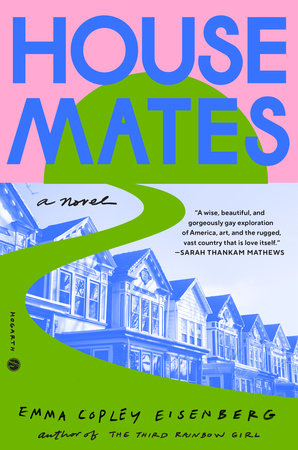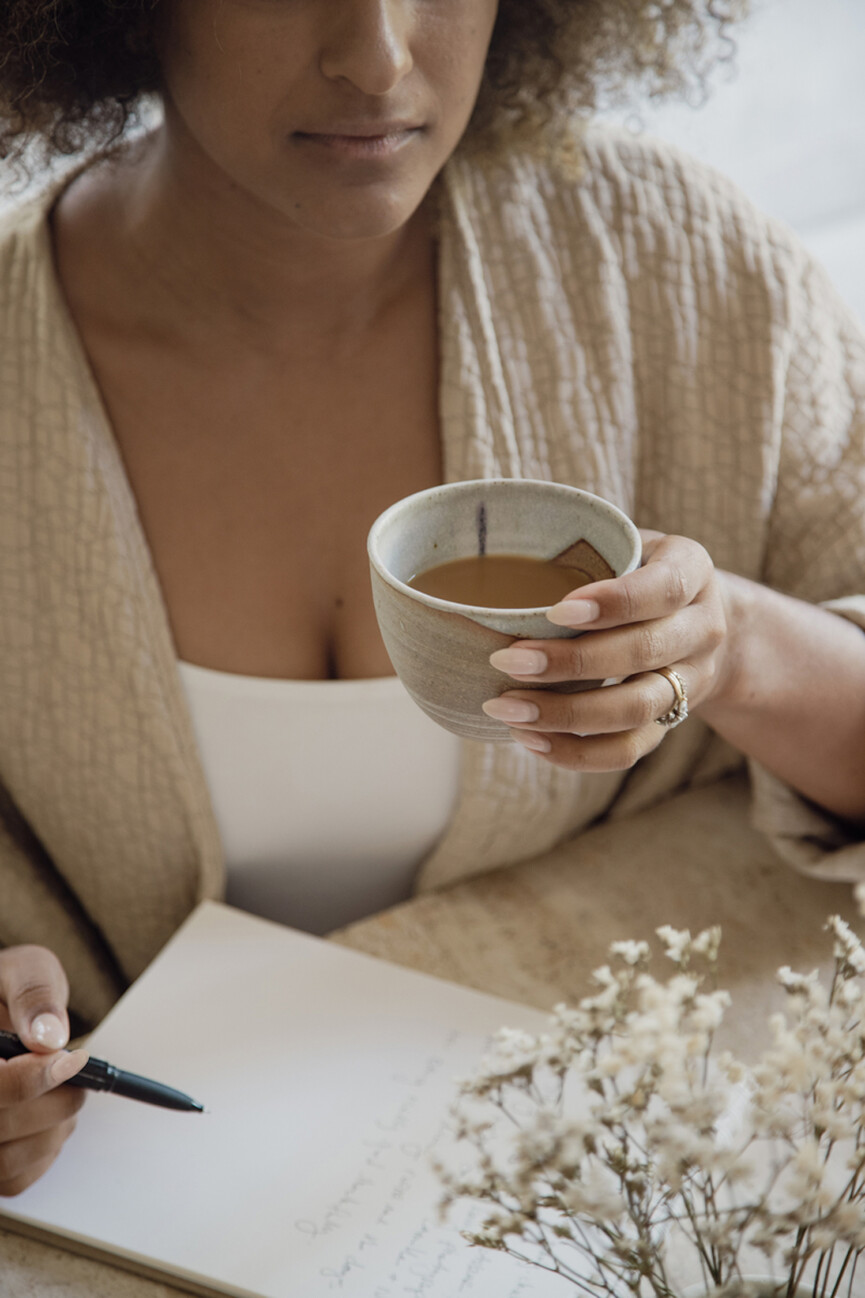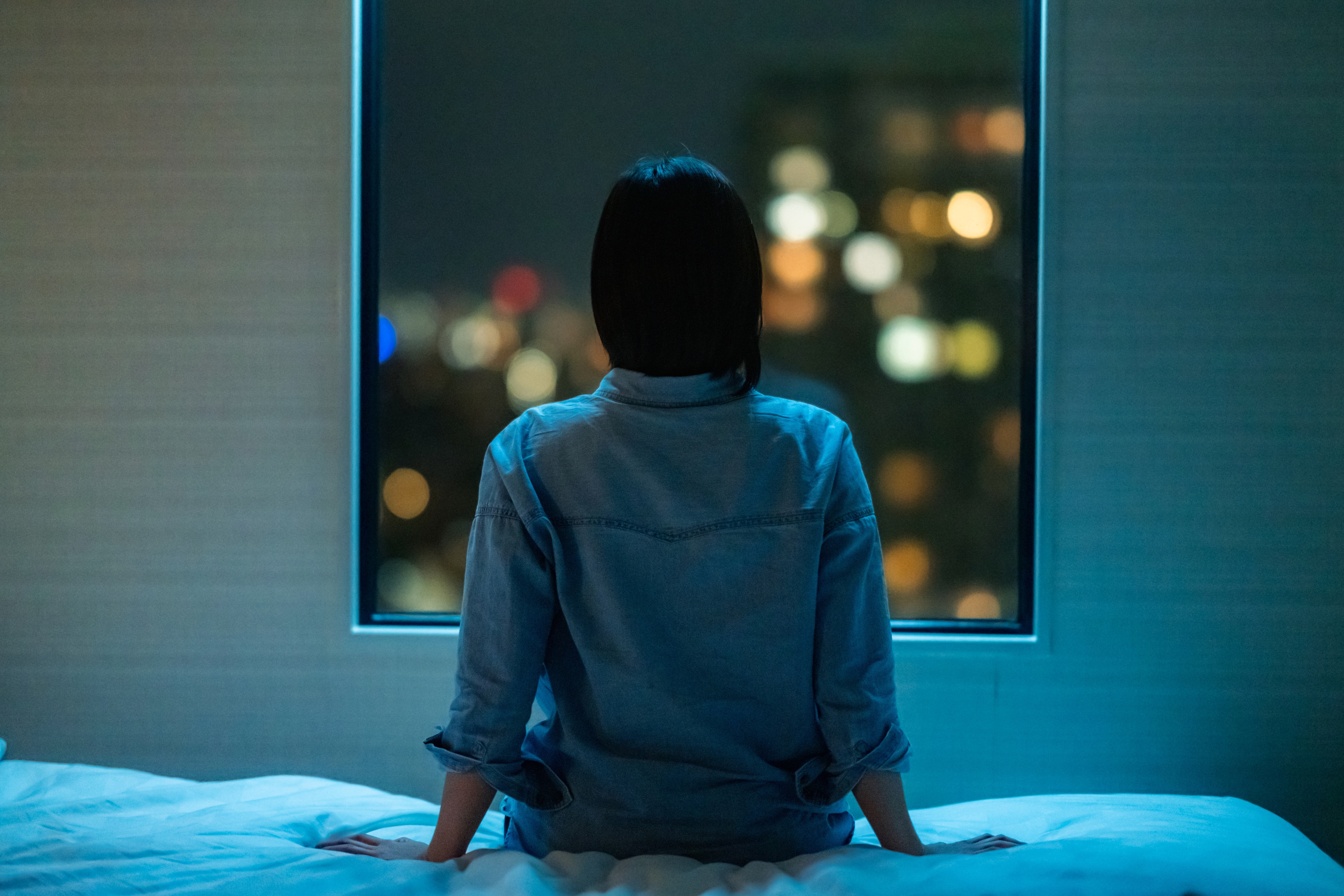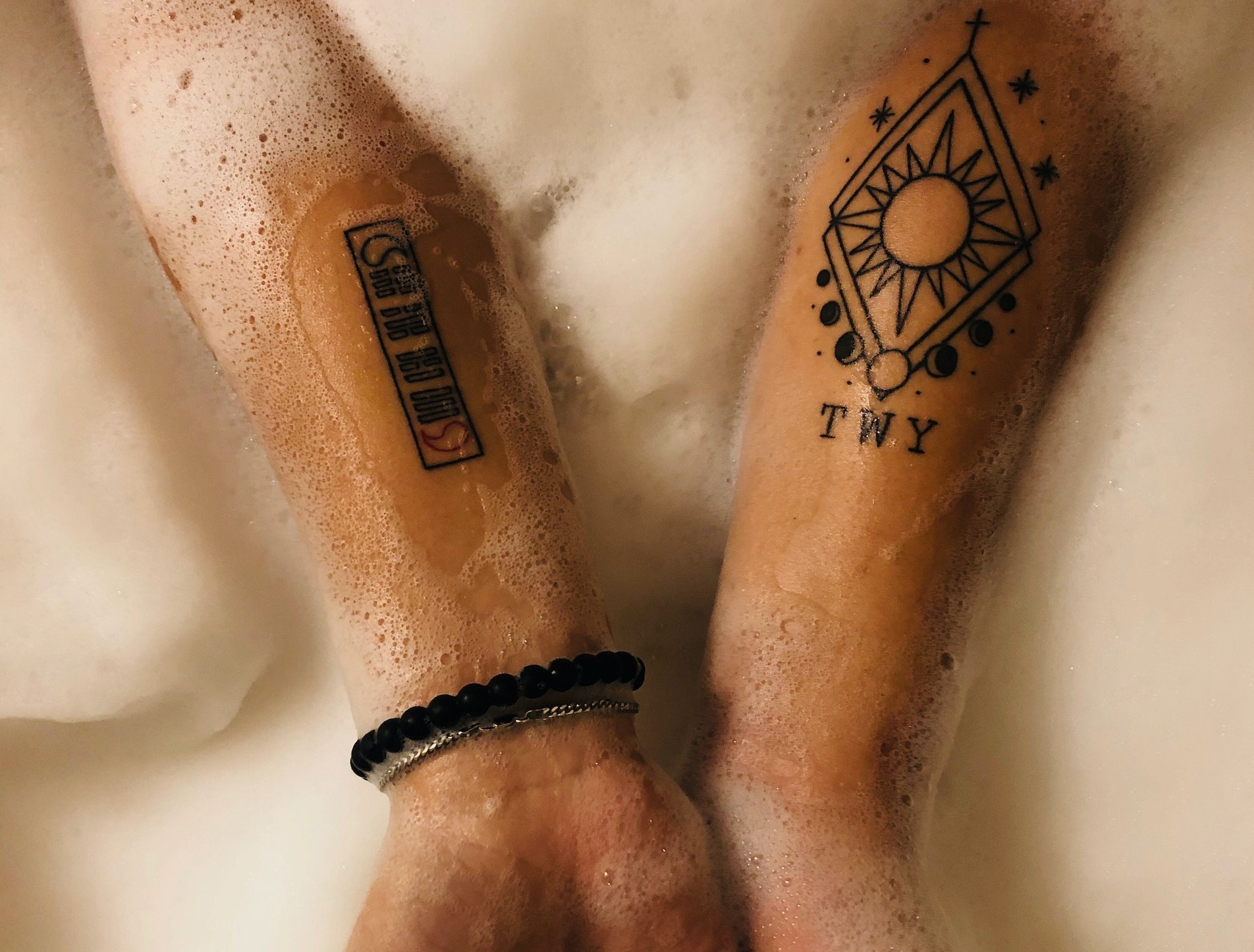Emma Copley Eisenberg’s novel Housemates begins with a heartbreaking address from The Housemate, a 70-year-old lesbian who grieves her beloved and who, like so many queers throughout history, has been erased from the public record of the person she built her life with. Through imaginative leaps, The Housemate follows Leah and Bernie, two twenty-something queers who embark on an artists’ extended road trip to capture Pennsylvania during a time of political and cultural discord. Bernie, an incarnation of Bernice Abbott, often unaware of her innate talents and blind spots, yet called to capture the world in large-format photography. Leah, an ambitious writer inspired by Elizabeth McCausland, yearns to really live, stop “scratching around,” and bucks against “editors who did not want truth that had been true a long time but had only wanted things that had recently become true.” The question, night after night on the road, of course, is will they or won’t they? And at the end of this endeavor, what will they mean to one another?
As a reader, I found myself rooting for these two young queers (much as The Housemate does) and often wanting to befriend them—by the end of the book, feeling as if I had. Overshadowing the adventure are some grim political realities, including the legacy of a post-Trump America and Daniel Dunn, Bernie’s former teacher and “one of many old art world men who’d finally gotten busted after years of impunity” and multiple Title IX complaints of sexual misconduct. The two friends face threats—real and perceived. Housemates is written in crisp lines and unfolding dialogue, and is reminiscent of Catherine Lacey’s Biography of X in its stark portraits of a divided America. We are reminded that there is something radical about two queer women taking to the road alone. The pair witness, as anyone in America must, instances of homophobia, fatphobia, racism, classism, misogyny, and manage somehow to end up at a rural gay bar named Rock Candy. At heart, Housemates is a joyous novel that bubbles with the effervescence of queer youth, celebrates the idiosyncratic and sometimes absurd queer culture of West Philadelphia, and chases down young love.
Emma Copley Eisenberg and I are friends in West Philadelphia, where we are members of The Claw, the salon for women, nonbinary and genderqueer writers. For this interview, we talked via Riverside and at Renata’s, a favorite West Philly establishment.
Annie Liontas: One of your characters, Bernie, practices large-format photography, a form painstakingly achieved over many hours, and which the artist cannot ever be really sure of until the image is developed. Is Housemates, in its own way, a large-format portrait of America?
Emma Copley Eisenberg: Damn. What an amazing way of seeing the book. I mean, yes? Yes. I did a ton of research into large format photography for the book, mostly shadowing a practicing female large format photographer named Jade Doskow but also reading essays and watching talks by accomplished large format photographers like Baldwin Lee, Stephen Shore and others. (I also spent a lot of fruitless hours watching videos of gear and home developing by longwinded photography bros). What kept coming up over and over again is surprise, that you don’t have control over all the elements of the photograph, because a large-format camera’s “eye” actually sees more and in more detail than the human eye can. I find this to be a really resonant metaphor for writing a novel. I tore this novel apart and put it back together so many times; the book readers will hold in their hands is different in every way than the novel I sold. America and what those years from 2018-2020 meant also kept changing as I wrote, years where things were starting to turn but we didn’t yet know how much worse everything would get. The novel knew more than I did, and could see more than I did.
AL: The novel always knows more than we do, doesn’t it?
Housemates, at its heart, is very much a celebration of queer relationships, women’s bodies, fatness, art–topics that, as your friend, I know you care deeply about. In your acknowledgments, you write that with this work you “celebrate and mourn the lives of the queer ancestors” who came before you. Why is it important, ultimately, that this story is told through the lens of Ann Baxter who is mourning an unnamed Housemate, who was never recognized as the widow of a lesbian partnership, and who tells us that Bernie and Leah helped her remember herself?
ECE: This would certainly be a simpler or easier book if I had just written about two young queers of today, staying close to them, in their POVs. But we can only write the novel we have to write.
Philly is a city that is not often seen in literary fiction, even though it is a major American city and fascinating to behold.
The spark for this novel came from reading about real large format American photographer Berenice Abbott and art critic Elizabeth McCausland, and a real road trip they took in 1935. Both left for that trip single and creatively adrift and came back very much together romantically and with a clear sense of the collaborative artistic work they wanted to do. I became obsessed with finding out what happened on that trip, not factually, but emotionally, novelistically—why did going out into rural America change their lives so much and staple them together? But the project they made together was suppressed and ruined, stripped of its queerness and political radical ideology and made into a kind of tourist guidebook (though it has been finally published in its original form) that made Abbott kind of famous but left McCausland behind. McCausland was fat and butch and just cut an odder and less socially acceptable figure at the time than Abbott, though Abbott too was clearly gay and unwilling to play the art world’s game.
But I knew I did not want to write a historical novel, even as I wanted to pay homage to Abbott and McCausland and resurrect their courage, their love, and the ways that their partnership transformed both of their lives. I wanted to write a novel about what it is to be a queer person now, an artist now, and a person who is looking for love and truth in America now, a place that is so fundamentally hostile to both queerness and artmaking, but a novel that still thought aloud on the page about time, about generational gaps, and about queer lineage, inheritance, and erasure. I played with a lot of different ways of creating a novel that had two layers, the then and the now, but in a moment of weird magic that has never become before or since, the first person voice of Ann Baxter who ultimately narrates Housemates just appeared to me and wanted to be heard. Who is this? I thought. I kept writing to find out.
AL: It’s easy to think that Bernie is the one gifted with sight. But it is Leah who has vision—who is the architect of this collaboration and who sees what Bernie might become. Leah has the foresight to get research funds, and then to imagine the scope of their project. Some critics in the fictive art world of Housemates suggest that without Leah’s “playful, elliptical, even strange voice” Bernie’s art would be “pretty pastoral images.” What does Leah see that Bernie doesn’t?
ECE: In this duo, Bernie is kind of the shinier, flashier one. She has the charisma that people respond to. She is one of those people who just has a kind of natural instinct for an art form, which some people call talent. Bernie is also emotionally submerged when we meet her, a stranger to herself, to her body and to her art (we later learn some reasons why) which makes her withholding and tough to love, a thing that hooks a lot of people. But if Bernie has sight, Leah has insight—a deep understanding of what the two of them are trying to do and the ability to articulate it. Leah also can see love and sex, is invested in care, intimacy, and togetherness in a way Bernie is afraid to be. Plus Leah can see the body; is profoundly struggling with her fat, beautiful body throughout the whole book, really grappling with it, touching it and feeding it and taking pleasure in its strength and trying to figure out why the world has such a problem with fat bodies. This impresses and activates Bernie. I got really excited to explore how what Bernie can see that Leah can’t bumps up against what Leah can see that Bernie can’t. I think maybe you’ve helped me identify that this is at the heart of this book and maybe every artistic collaboration? What do you think?
AL: Yes! Sight versus insight! That differentiation feels very important and true to them as individuals and practitioners, and, as you note, might be essential to artistic collaboration.
I love how you’re describing for us, as part of Leah’s insight, her interrogation of the world’s relationship to fatness, but most of all I love how you celebrate Leah—both her mind and her body. Throughout the novel, she grapples with her family’s expectations of thinness and weight, as well as the scrutiny placed on her by classmates and strangers. We’re told that “fatness changed her gender somehow, made her into not a girl to these boys, maybe not a human being…a strange feeling to know that there is no man in this world to whom your body is sacred.” What does it mean to you, as a writer advocating for a paradigmatic shift around fatphobia, to write a queer character seeking—and often embracing—embodiment?
It’s a particular fuckery to be a fat person in your thirties now and see the ways that the culture has both profoundly changed and not changed at all.
ECE: Arguably, I’ve been preparing my whole life to write the character of Leah, so it means a great, great, deal. She shares some of my biography, and I share some of her body. I share her fat folds and her big boobs and her deep grief about the ways her large body is not sacred and was not cherished she was a child. It’s a particular fuckery to be a fat person in your thirties now and see the ways that the culture has both profoundly changed (more than half of Americans are now considered fat, there exist books like Thick: And Other Essays, Fat Talk: Parenting in the Age of Diet Culture, and Unshrinking: How to Face Fatphobia) and not changed at all (all forms of bias in American life have gotten better in the last 10 years except for fatphobia which has gotten worse, there are so few positive or even neutral representations of fat bodies in literary fiction). It’s also a particular fuckery to be a fat queer person, and be in spaces of predominantly white, thin queers and just see how clueless and dismissive queer people are of fatness and disability liberation. So Leah is grappling with all these things and also just really trying to make sense of the way her body is loved, is joyful and sexy and attractive but at the same time reviled and discriminated against. The novel has a lot of constant discussion, back and forth between Leah and Bernie about the relationship between the mind and the body, and this is a discussion that was urgent and urgently unfolding for me in real time as I wrote this book over the course of about five years.
AL: Gorgeous answer! The novel is personal in other ways, too, and seeking to do advocacy in the world in the ways only good fiction can. In 2017, you filed a Title IX complaint against University of Virginia professor and award-winning writer John Casey. How did that inform your writing of Daniel Dunn in Housemates?
ECE: I did, it’s true. Google is free so I won’t rehash the whole thing here but that experience did inform the novel for sure. What I felt most haunted by was the idea that I was taught what good writing is by someone who did not see me as a full human being. If art is supposed to be a mirror of life, reflecting back true things that we wouldn’t be able to see without it, the influence of a toxic artistic mentor warps the mirror. I was interested in that. Can the mirror ever be unwarped? Can you ever trust your own eyes again? This is especially potent for Bernie in the novel because she is a photographer — mirrors and light and eyes are all she has. Daniel Dunn is her professor in college, and he nudges her away from being a graphic design major and toward being a fine art major, a thing that changes her life, and later in the novel he gives her a gift that changes both Bernie and Leah’s lives. Bernie and Daniel Dunn do feel a real kinship, I think, as they both come from working class white families in rural Pennsylvania. I wanted the relationship between Bernie and Daniel Dunn to be complicated in all the ways that real professor-student relationships are, with their mix of awe and resentment and careerism and ambivalence and vicarious living. Daniel Dunn isn’t sexual with Bernie, though he is with other students; Bernie is a lesbian, which protects her to some degree and lets him be more authentically vulnerable with her. But for people who have not learned how to love without harming, vulnerability isn’t always a good thing. The most painful thing that a boundary-crossing artistic mentor can do is not always sexual — the things they say about you and your work can stay with you for a lifetime.
AL: You write West Philadelphia with such precision, acknowledging racial and socioeconomic divisions, capturing versions of the city that once existed but no longer do, and making just a little fun of the West Philly queer scene (with a nod to Philly’s Lesbian Haunted House). What was important to you about getting Philly onto the page?
ECE: Philly is a city that is not often seen in literary fiction, even though it is a major American city and fascinating to behold. This is changing, with the publication of gorgeous novels like Marie-Helene Bertino’s Beautyland, Asali Solomon’s The Days of Afrekete and Disgruntled, Liz Moore’s Long Bright River, Michael Deagler’s Early Sobrieties, Sara Novic’s True Biz, and many more, though there is no novel before mine as far as I am aware that is about a queer West Philly group house (though I have heard that parts of Nell Zink’s Nicotine are based on West Philly).
Vulnerability isn’t always a good thing.
I think as we get older, we become more aware of the reasons why we write. In that old George Orwell essay, he says that one of the reasons some people write is “Historical impulse. Desire to see things as they are, to find out true facts and store them up for the use of posterity.” I think this is true of me, that in addition to things like having fun and aesthetic impulse for beauty and political purpose, I am drawn to render what is around me simply to say, this happened, this was here, and it mattered. Group houses exist everywhere that people paying rent exist, but there is a particular kind of queer group house—which can be a mix of white people and people of color but are usually white dominated, a salient thing in a neighborhood that is historically Black—that happens in West Philly that I lived through in my twenties that can become this really interesting pressure cooker of intimacy and queer intragroup political jockeying born of the shame of participating in gentrification in a way I just found fascinating and funny and tender and I didn’t see it depicted anywhere. But the more I wrote about the neighborhood, the more I realized it was also essential on a plot level. Both Leah and Bernie are feeling grumpy, disillusioned and burned out by the groupthink of their group house and queer West Philly, a significant part of the plot that helps propel them out the door and onto their road trip.
AL: What’s the best road trip you’ve ever taken? What were your must-haves and must-dos?
ECE: A little known fact about me is that after I left my job in southeastern West Virginia that I wrote about in The Third Rainbow Girl, I legit didn’t know where I wanted to live or what I wanted to do. So I took the money I had and drove about 10,000 miles over the course of about three months by myself. I slept a lot of those nights in the back of a little pickup truck. I basically did a huge oval across the country —west through the midwest and northwest then down the west coast and then back through the south and southeast. Some highlights: a fried chicken place in Kansas where they slather the chicken in honey, lightly stalking Annie Proulx at a cowboy bar in Wyoming, the Redwood Forest, The Grand Canyon in a whiteout snowstorm, a house show after a bookstore reading in Oxford, Mississippi. Must haves these days include: Dairy Queen blizzard with heath bar and cookie dough, a lot of audiobooks, and a car neck pillow because I’m old now.

























































